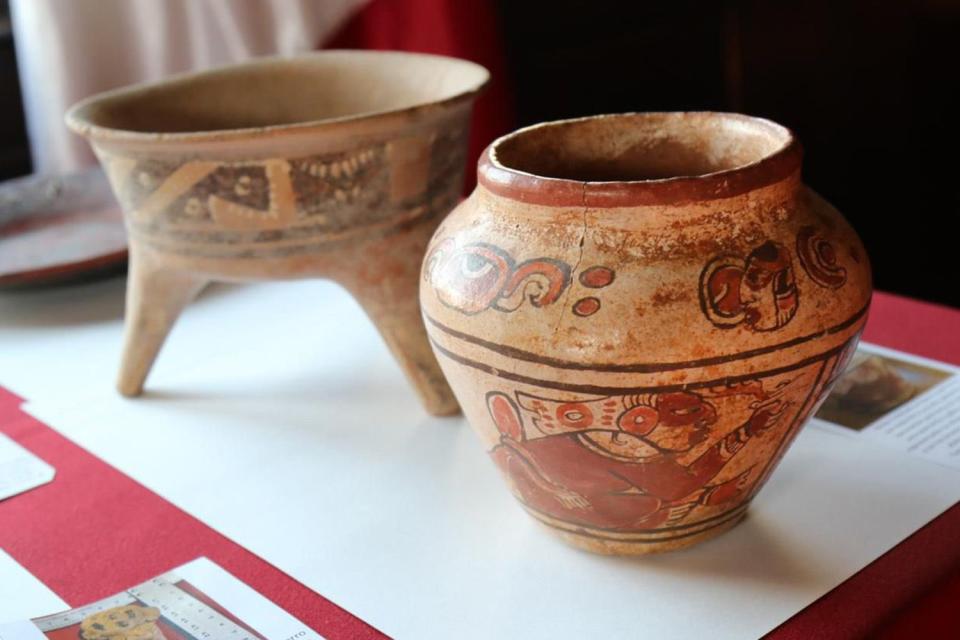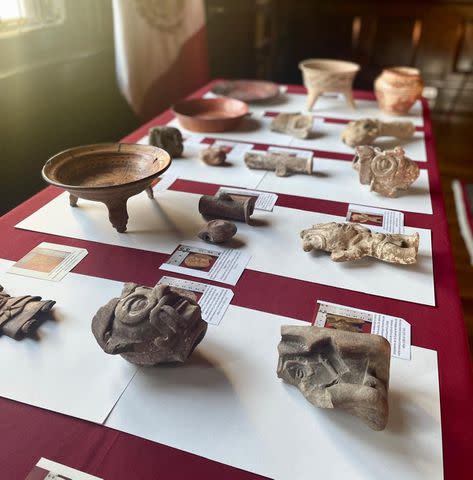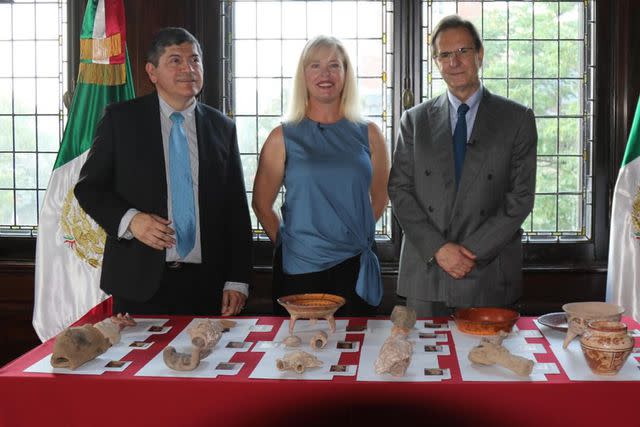Woman’s $3.99 Thrift Store Vase Turned Out to Be a Mayan Artifact – So She Returned It
A woman purchased a nearly 2,000-year-old Mayan vase at a Maryland thrift store — but didn't realize what she had until she saw a similar one in a museum

Esteban Moctezuma Barragan/x
Mayan artifact sold for $4.99 at Maryland thrift store returned to MexicoA woman from Washington, D.C.,was in for quite the surprise after she purchased a vase from a thrift shop for $3.99, which turned out to be a Mayan artifact.
Mom of three and cultural worker Anna Lee Dozier was exploring 2A Thrift Store in Clinton, Maryland. about five years ago, when she came across what she thought was a "tourist reproduction" of a Mayan vase, she told local CBS affiliate WUSA,
"It did look old to me, but not old-old, like 20 to 30 years old, maybe," she told NPR station KVCR.
"I could see that it had some kind of link to Mexico, in terms of what it looked like," she added. "And since it's a country that I work on and it's really important to me, I thought it would be just a nice little thing to take home and put on the shelf and to remind me of Mexico."
Then in January 2024, Dozier traveled to Mexico for business.
During her trip, she paid a visit to Mexico City's National Museum of Anthropology — and did a double-take when she saw some very similar vases to the one she purchased for less than $5. The vases she saw were so strikingly similar, that she approached a museum worker and asked what she should do if she found an artifact from the same historical period.
"Some of the things I was looking at looked awfully like what I had at home on my shelf," she told KVCR. "I still was dubious that it was real, but just thought it looked enough like that that I asked to speak to someone in the [museum] offices."
Related: 'Titanic' Artifact Recovery Mission Canceled After Death of 'Titan' Passengers

Esteban Moctezuma Barragan/x
Other artifacts at the Mexican Embassy.After arriving home from her trip, Dozier contacted the Mexican Embassy and sent them photos and measurements, and anthropologists working with the embassy determined that the vase was a ceremonial urn belonging to the Indigenous Mayan people — and it was nearly 2,000 years old.
The PEOPLE Puzzler crossword is here! How quickly can you solve it? Play now!
As she prepared to help the embassy transport the priceless artifact back to its home country, Dozier told KUSA she only had one worry — keeping it in the house with her three rambunctious sons.
"I was petrified that after two-thousand years I would be the one to wreck it!" she said.
Related: 10 Newly Discovered Shipwrecks from 3,000 B.C. to WWII Reveal Ancient Artifacts Spanning Centuries

Esteban Moctezuma Barragan/x
Anne Lee Dozier and ambassador Esteban Moctezuma Barragan at the Mexican Embassy.But after packing the vase into a cardboard box with crumpled-up newspaper as a cushion, she carefully drove it to the embassy in D.C., where Mexico’s Ambassador to the U.S. was waiting to send it home.
"A valuable witness to our Mayan history returns home 🇲🇽 #México," the ambassador wrote in Spanish in a post on X, announcing that the vase would be returned to the National Institute of Anthropology and History in Mexico City.
"Thanks to the generosity of Anne Lee Dozier, a US citizen, we recovered a classical vessel, dated between 200 and 800 AD," added Esteban Moctezuma Barragán. "This historical gem will be reintegrated into the [Institute] collection to preserve our rich cultural heritage."
Never miss a story — sign up for PEOPLE's free daily newsletter to stay up-to-date on the best of what PEOPLE has to offer, from celebrity news to compelling human interest stories.
According to Dozier, returning the vase to its home in Mexico was much more valuable than any financial gain.
"Giving it back feels so much better than it would if I put it on eBay and I got a bunch of money," she told KVCR. "It's really important to recognize that some of these things, especially with such historical and cultural value to an entire country and people — you can't really put a number on that."
For more People news, make sure to sign up for our newsletter!
Read the original article on People.


